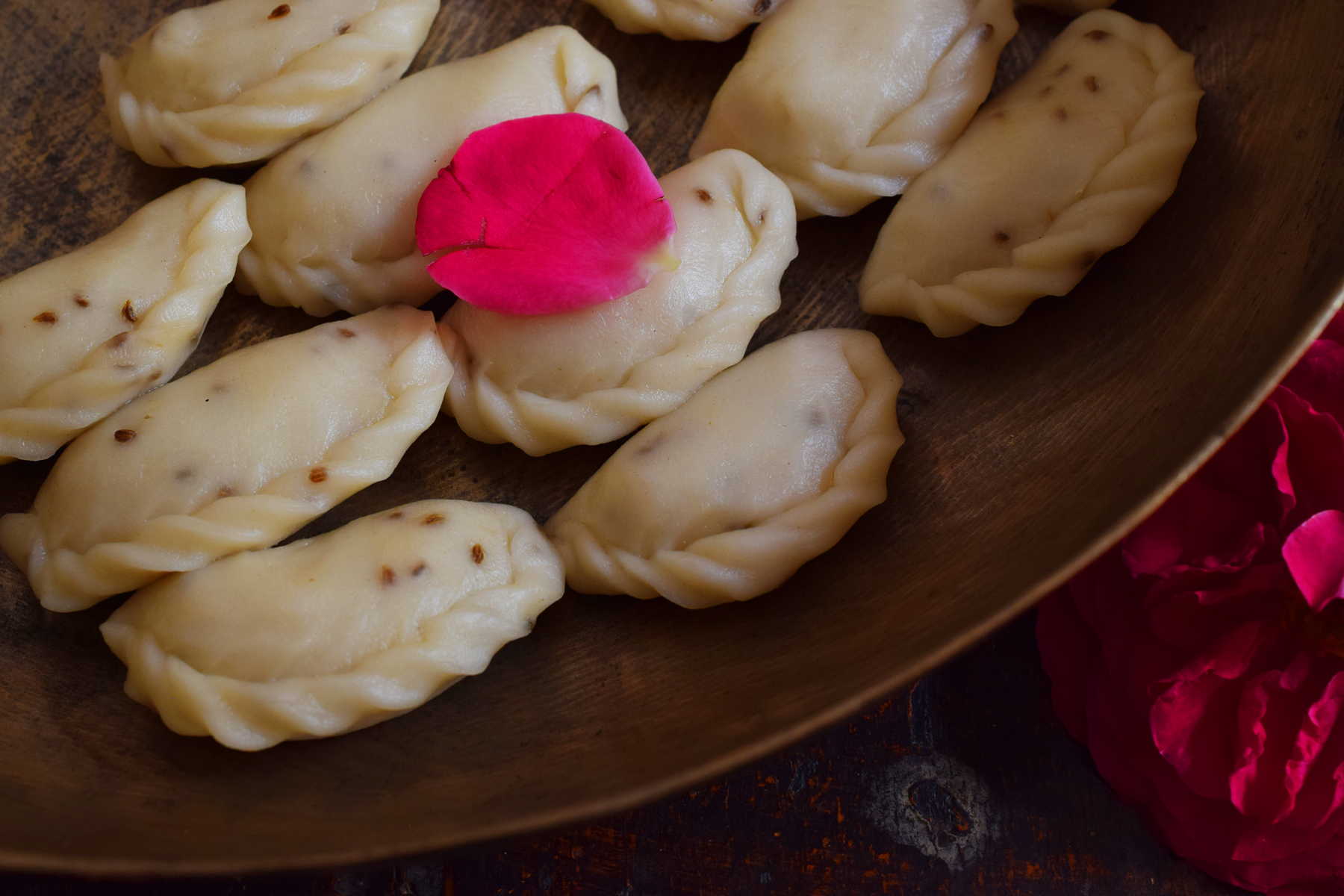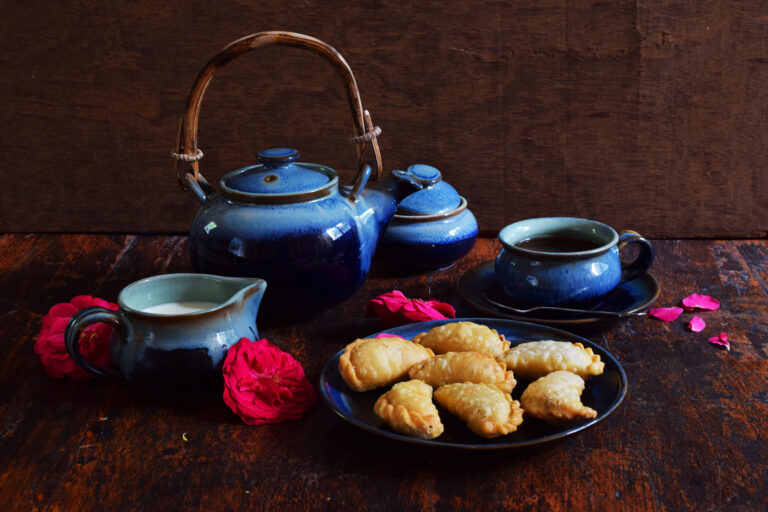There are always beautiful things that we learn from our parents, grandparents and in-laws. The kitchen is one such space of knowledge shared and passed on. When I got married into the family (in India, due to the joint family system – one marries families, not individuals!) I had the chance to learn more than I had imagined. My mother-in-law is an educated woman who enjoys cooking, and coming from different regions of the country, she and I had different styles and methods. We would often argue about how my family would make a dish a particular way, while she would insist that her family’s recipe was better. So it was with her kachoris, a delicious regional variant of the internationally-ubiquitous samosa.
This year, the Gujarati New Year falls on the day after Diwali. My mother-in-law’s kachoris are meant for special occasions, which makes this the perfect time to share the recipe with you. I like the thought of you trying this out in your own home, while we celebrate our festivals in ours!
Samosas, kachoris, ghugras – by any name, they are a crispy snack enjoyed all over India, composed of fillings of your choice encased in a fried pastry. This variant, however, is special – where most are either sweet or savoury, our family recipe is the perfect mix.
Like many beautiful things, simplicity is the key. Flavours open up easily when the ingredients are kept simple.
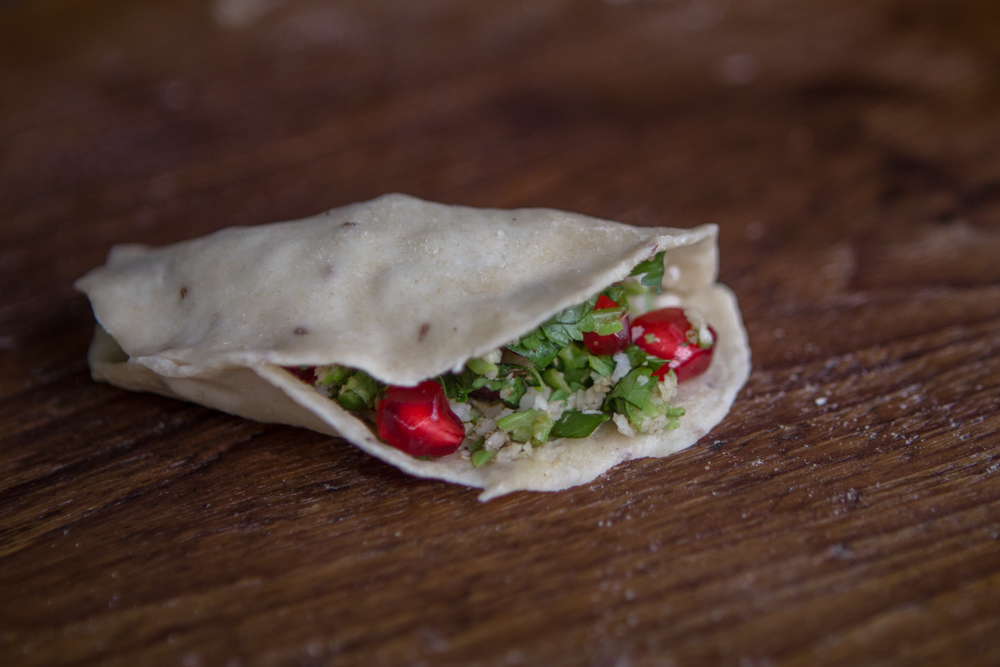
Sweet-Savoury Pea-Pomegranate Kachori
Dough:
1 cup all-purpose flour
1 tablespoon olive/groundnut oil
quarter cup water
half teaspoon caraway seeds
salt to taste
Filling:
1 small cup pomegranate seeds
1 small cup crushed green peas
1 small cup finely chopped coriander leaves
1 small cup freshly shaved coconut
1 teaspoon dry mango powder
salt to taste
half teaspoon brown sugar (optional)
half teaspoon garam masala (optional)
Keep the dough ready. It needs to be a little tougher than bread dough consistency. Add a little salt and oil to it, as well as caraway seeds, which not just help with digestion (according to my mother, whose culinary sense influences me deeply), but also add an attractive speckle to the pastry.
My filling of choice is a mix of pomegranates and peas, to which I add generous portions of chopped coriander and shaved coconut. In this recipe, the coconut acts as a balancer. It has a subtle flavour that enhances that of the sweet-savoury combination.
Place out equal portions of pomegranates, peas, coriander and coconut, increasing or reducing them based on your personal preference.
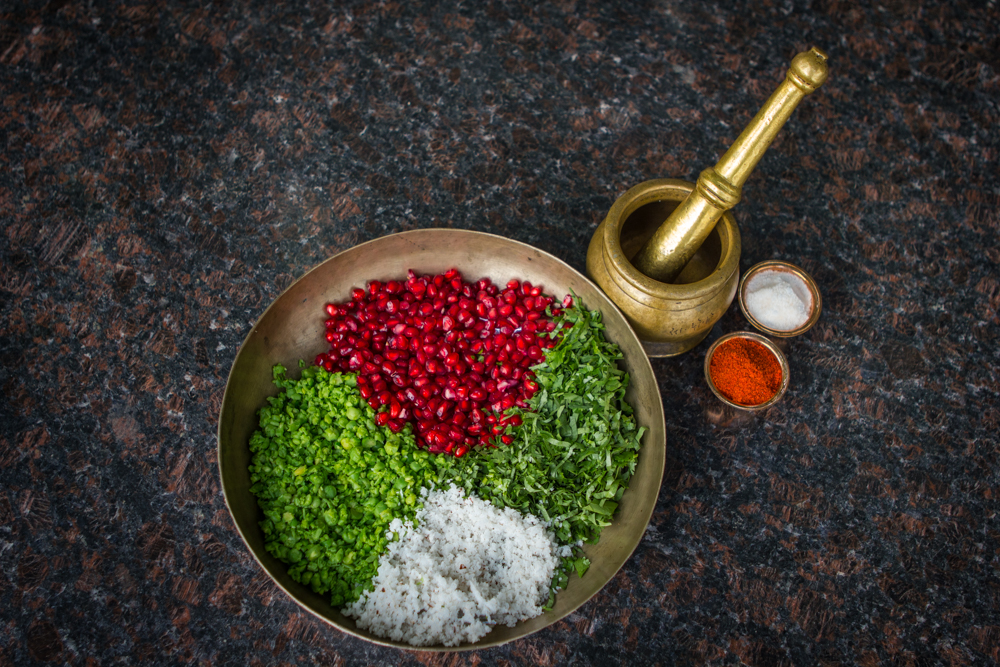
I love the colour and glisten of pomegranate seeds, and hints of saltiness and tanginess offset their sweetness in a way that is marvellous on the tastebuds. To do this, add not just salt to taste to the filling, but dry mango powder too. Mine is always homemade. The mango tree at home is laden with fruit from May through July every year. Those sweltering months of sunshine always find the fruit’s flavours being pounded and packed away to last until the following summer. I make and store a year’s worth of such condiments at a time: mango powder, ginger powder, turmeric and more. I far prefer these to supermarket varieties. The mango powder, prized and used sparingly, adds a tang to dry dishes like the kachori. For dals and curries, freshly squeezed lemon juice does the trick.
Gently mix the ingredients – pomegranate seeds, peas, coriander, coconut and a hint of salt and dry mango powder – with your hands, making sure the flavours are evenly distributed.
There are a number of optional ingredients you can add to the filling. For more spice: garam masala. For more sweetness: brown sugar. For crunchiness: crushed peanuts/cashewnuts or sesame seeds. My mother-in-law’s original recipe calls for ginger paste and green chillies.
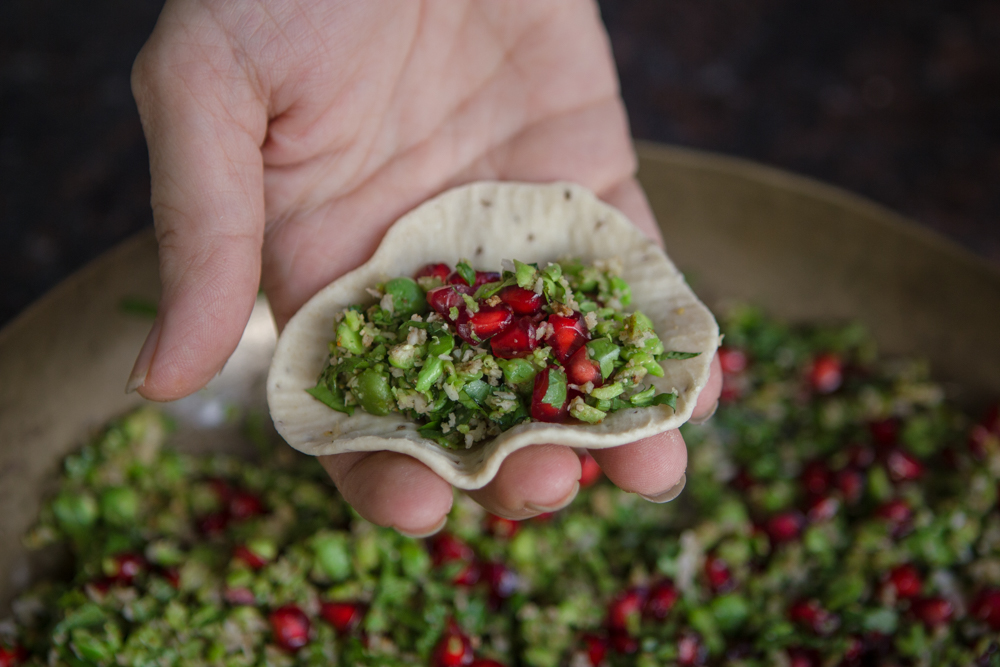
Roll out small rounds of the dough. You’re now ready to craft your first kachori. Hold one flattened circle of dough in your palm, tenderly place a spoonful of filling at the centre, and prepare to fold. Depending on the size of these dough circles, the portions of this recipe will give you between 8 and 12 kachoris.
All the glorious, vivid colours of the filling – ruby red, vibrant green, shining white – are nestled within the finished product, so all the aesthetic delight of the kachori comes from the folding. The kachori must be crafted with the fingers. Some things are better seen than described, so here’s a video that shows you how it’s done:
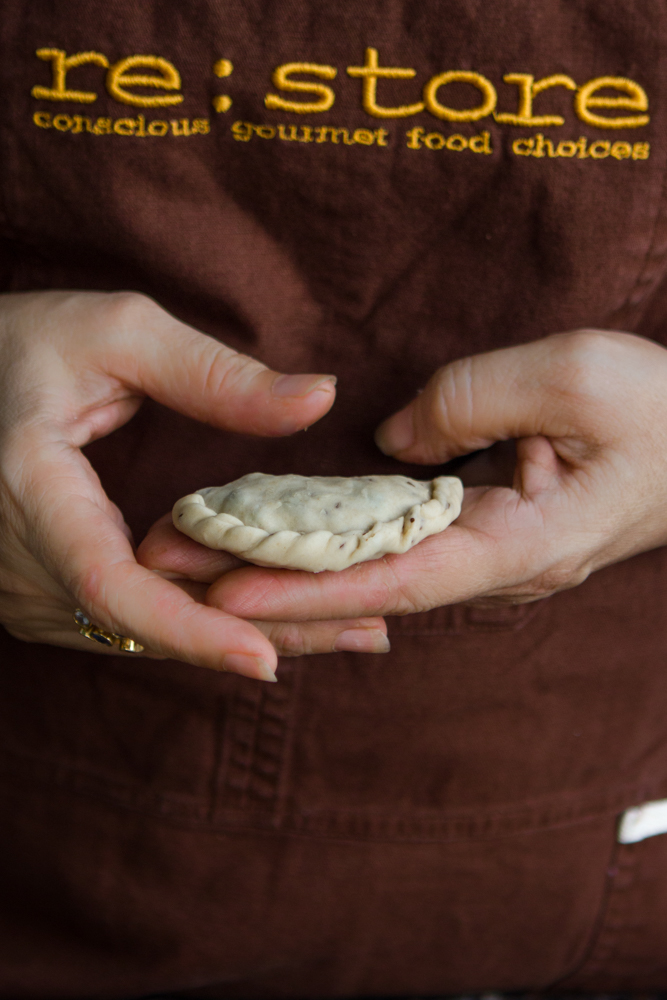
As with anything else, practice makes perfect. I had to try my hand at them for many years before learning how to fold the kachoris just so, but I assure you that despite a long struggle, I eventually got the hang of it!
I like to make them small, bite-sized, so they look pretty and are just right for a mouthful. After all, quantity does matter in any presentation. A perfectly-proportioned snack should always leave one feeling, “maybe I’d like to have just another one”.
Another way to present them is in the adorable potli or little bag style. These can be tied with a sprig of lemongrass prior to frying to add not just aesthetic appeal, but a special flavour as well.
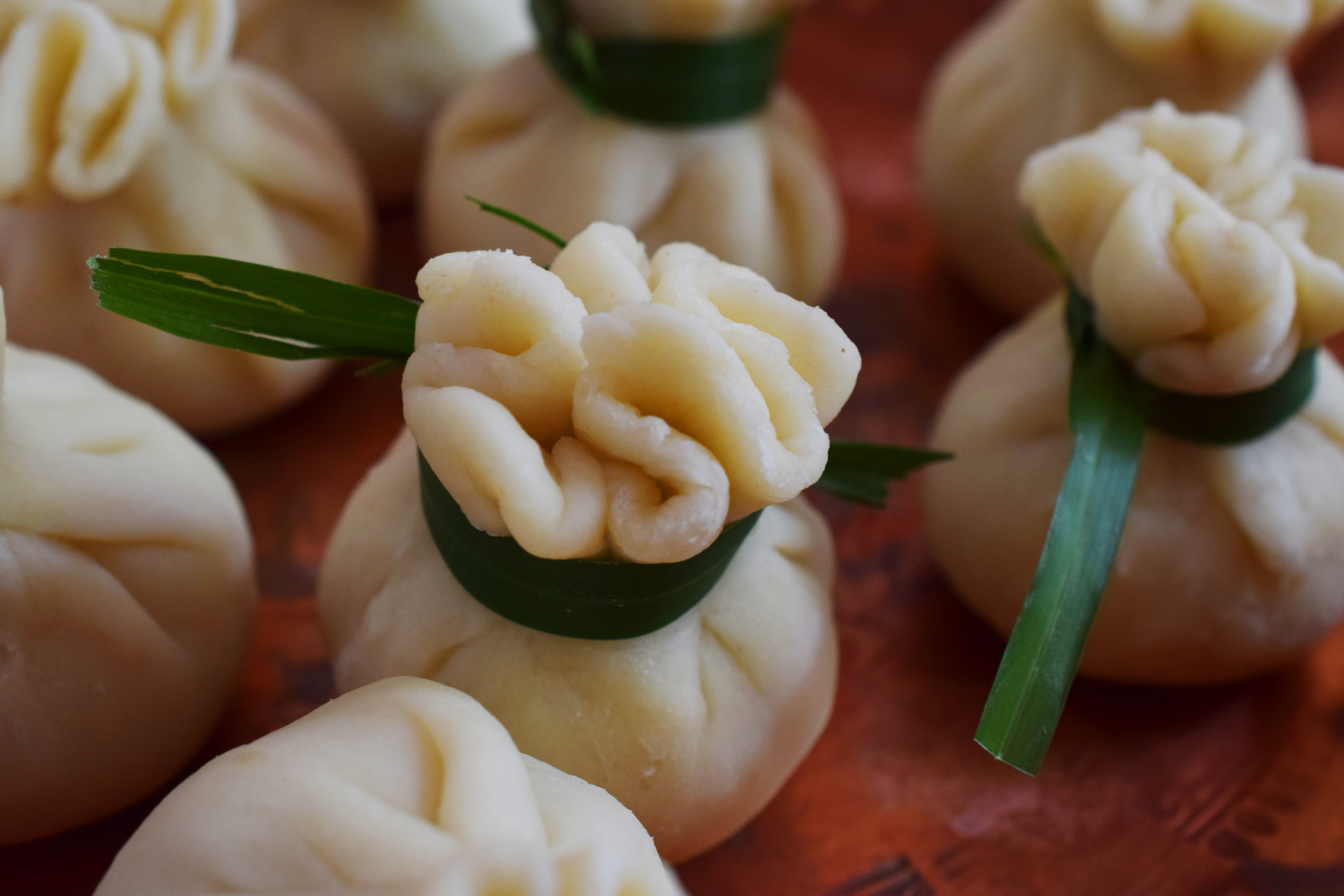
Make a plateful of these lovely kachoris, and keep them ready for either deep frying or baking. The latter option is, of course, healthier – and I find that there is hardly any difference to the taste. The former, however, is traditional!
Once the kachori has been crafted in your hands, it can be kept for up to 4 hours before frying, which makes this dish ideal for preparation a little ahead of a party, so it can be served hot when required. In warm weather, be sure to refrigerate the folded kachoris if you aren’t frying them right away.
Once the oil is heated, lower the temperature and drop each kachori gently into the pan. Do not increase the temperature until they are fully cooked through. A golden, almost champagne, colour is the desired effect. If the temperature is too hot, not only will the colour change too quickly, but the filling may not cook through.
I love this time of year, when the festivities of Diwali and Gujarati New Year enliven my home and exhilarate my family. I recall my early arguments with my mother-in-law and must concede that where these sweet-savoury kachoris are concerned, she has won (with a few flairs of my own). But I grew up watching my mother make her version – a sweet ghugra of nuts sweetened with jaggery. I’ll be sharing that recipe in the coming months, too. In the meantime, I hope you’ll be biting into delight with this one!
